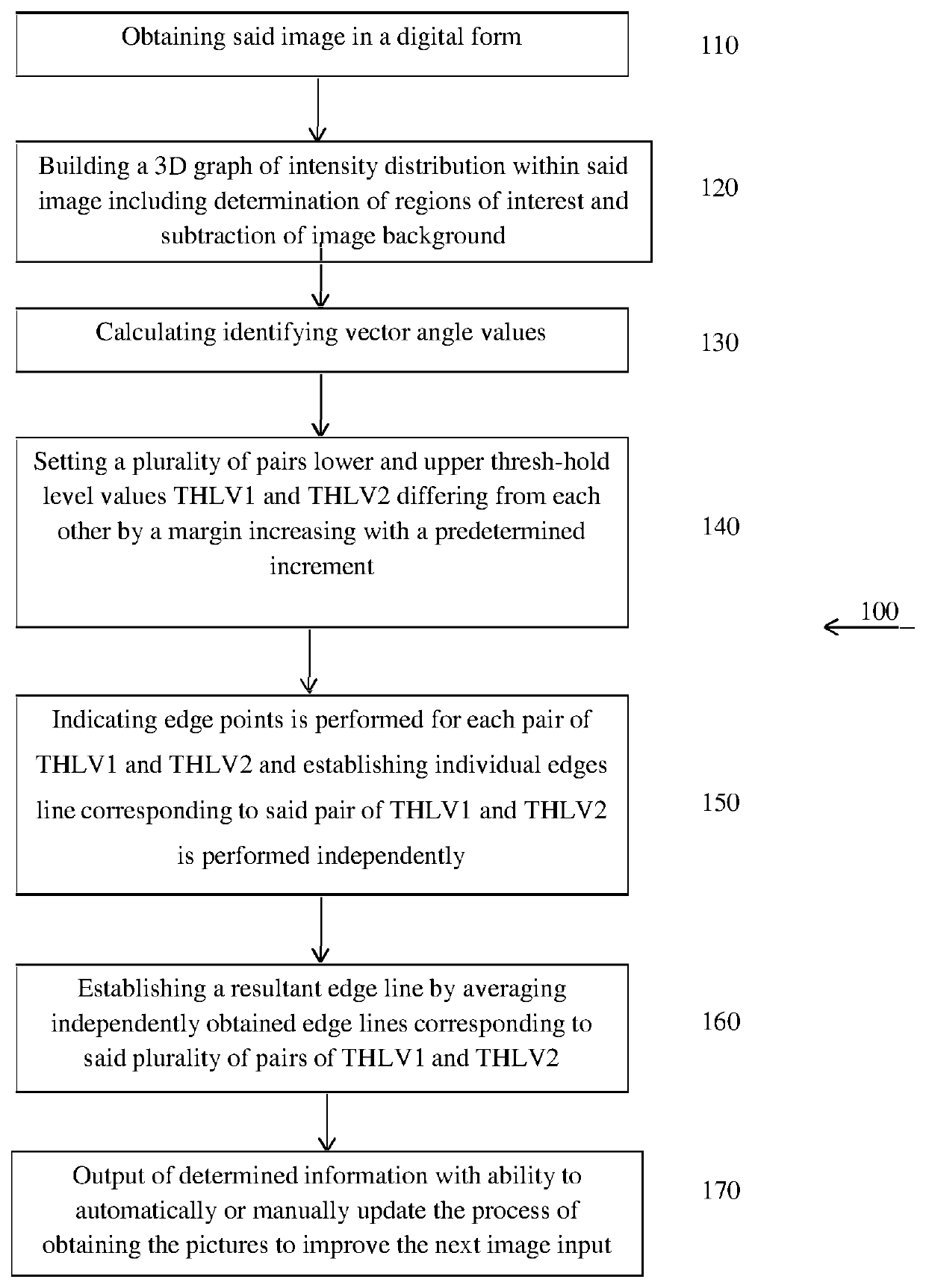System and methods for fully automated data analysis, reporting and quantification for medical and general diagnosis, and for edge detection in digitized images
a fully automated, image-based technology, applied in image data processing, instruments, computing, etc., can solve the problems of large limitations in the full automation of image analysis, near-infinitely complex machines and machine operations, and accurate fully automated systems, so as to improve detection and increase or decrease the gain
- Summary
- Abstract
- Description
- Claims
- Application Information
AI Technical Summary
Benefits of technology
Problems solved by technology
Method used
Image
Examples
Embodiment Construction
[0028]The novel features believed to be characteristics of the invention are set forth in the appended claims. The invention itself, however, as well as the preferred mode of use, further objects and advantages thereof, will best be understood by reference to the following detailed description of illustrative embodiment when read in conjunction with the accompanying drawings, wherein:
[0029]FIG. 1 is a flowchart of a method of detecting of an edge in digitized images
DETAILED DESCRIPTION OF THE PREFERRED EMBODIMENTS
[0030]In the following detailed description of the preferred embodiments, reference is made to the accompanying drawings that form a part hereof, and in which are shown by way of illustration specific embodiments in which the invention may be practiced. It is understood that other embodiments may be utilized and structural changes may be made without departing from the scope of the present invention. The present invention may be practiced according to the claims without som...
PUM
 Login to View More
Login to View More Abstract
Description
Claims
Application Information
 Login to View More
Login to View More - R&D
- Intellectual Property
- Life Sciences
- Materials
- Tech Scout
- Unparalleled Data Quality
- Higher Quality Content
- 60% Fewer Hallucinations
Browse by: Latest US Patents, China's latest patents, Technical Efficacy Thesaurus, Application Domain, Technology Topic, Popular Technical Reports.
© 2025 PatSnap. All rights reserved.Legal|Privacy policy|Modern Slavery Act Transparency Statement|Sitemap|About US| Contact US: help@patsnap.com

